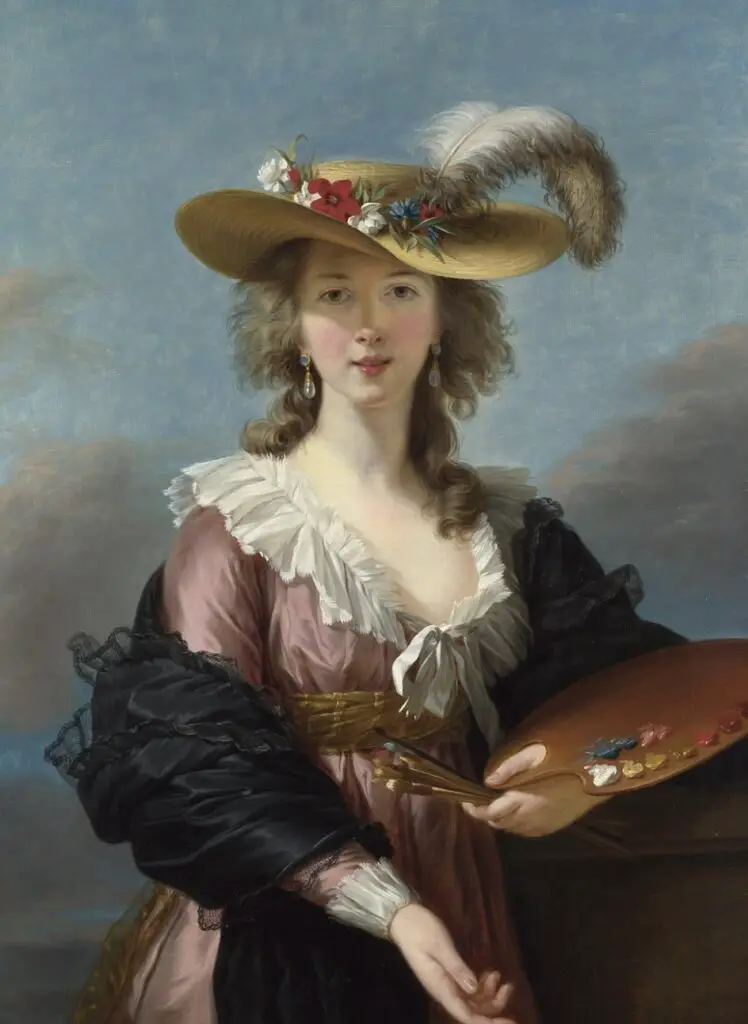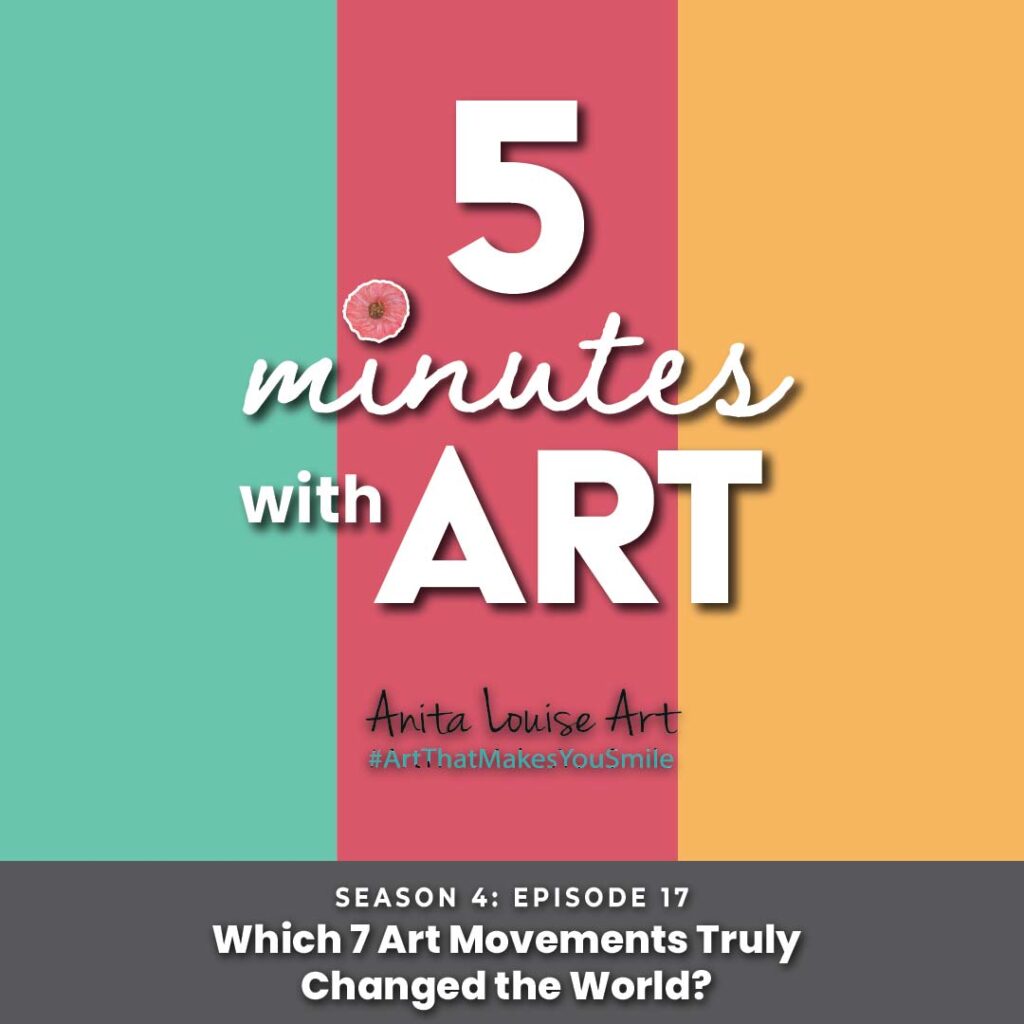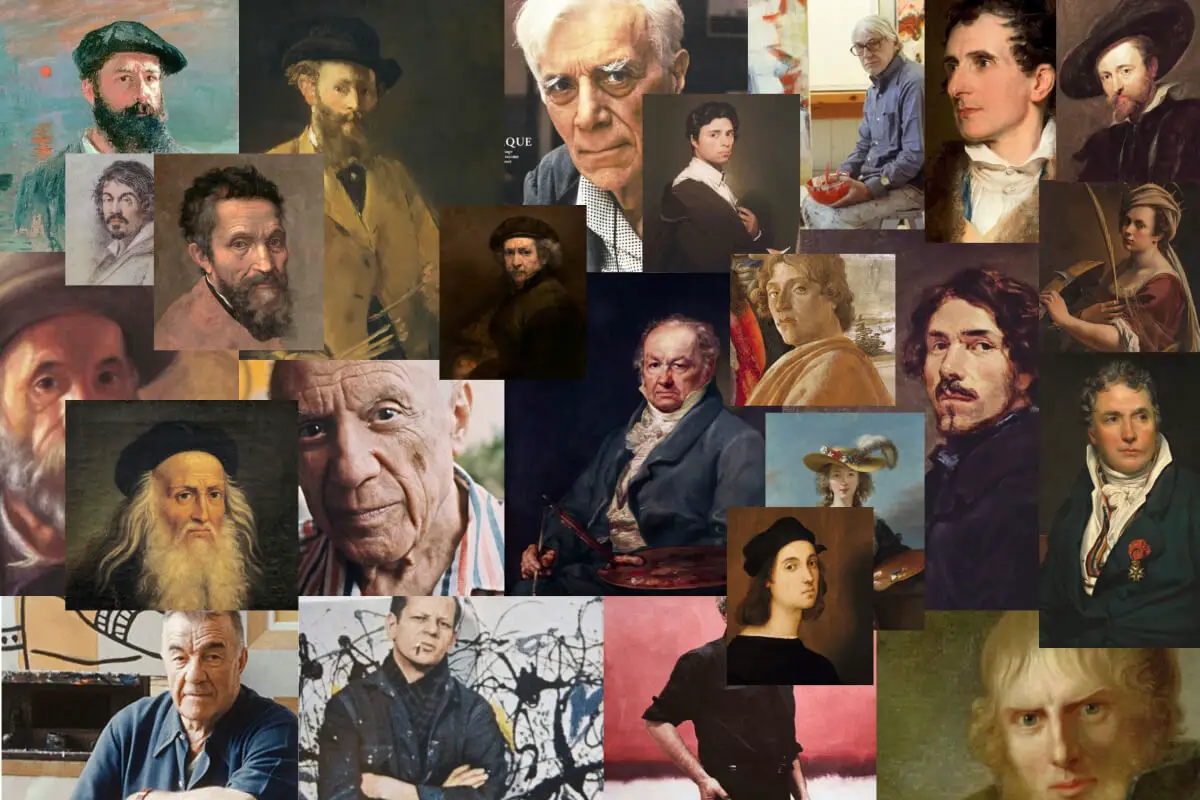Art has always been more than decoration on a wall—it’s a mirror to society, a voice of resistance, and a catalyst for change. Across history, certain art movements have done more than inspire awe; they’ve shaken foundations, sparked revolutions, and influenced the way we perceive the world around us.
These seven movements have responded robustly to political turmoil, social shifts, and cultural awakenings. From the emotional depths of the Renaissance to the bold experimentation of Abstract Expressionism, each movement emerged from its unique moment in time yet left a lasting legacy that transcends generations. These seven art movements didn’t just leave behind stunning masterpieces—they left behind new ways of thinking, seeing, and engaging with the world.
Table of Contents
- 7 Groundbreaking Art Movements That Shaped Culture and History
- Let’s Recap:
- Related Questions
7 Groundbreaking Art Movements That Shaped Culture and History
Art is more than beauty—it’s power. It challenges norms, questions authority, and reflects the soul of an era. Some movements didn’t just produce great paintings; they changed how people think, see, and live. Here are seven art movements that disrupted tradition, redefined creativity, and reshaped the world.
1. The Renaissance (14th–17th Century)
Why The Renaissance Mattered:
The Renaissance didn’t just birth brilliant paintings—it sparked a cultural rebirth. It reintroduced classical philosophy, prioritized human experience, and fused science with art. This shift laid the foundation for modern Western thought.
Key Characteristics of Renaissance:
Realism, perspective, anatomical accuracy, classical themes.
4 Major Artists:
- Leonardo da Vinci – The Last Supper, Mona Lisa

- Michelangelo – The Creation of Adam, David

- Raphael – The School of Athens

- Sandro Botticelli – The Birth of Venus

Impact of Renaissance:
Renaissance artists developed a linear perspective, transforming flat surfaces into lifelike spaces. Leonardo’s notebooks show how art and engineering merged. Michelangelo’s sculptures captured human emotion and divine power.
These artists elevated art into a discipline of intellect, shaping everything from architecture to medicine.
2. Baroque (1600–1750)
Why Baroque Mattered:
Baroque art was propaganda with style. Born out of the Catholic Counter-Reformation, it aimed to impress and emotionally engage the masses. It used drama, contrast, and motion to speak to the masses.
Key Characteristics of Baroque:
Intensity, contrast, movement, emotional depth.
4 Major Artists Of Baroque:
- Caravaggio – The Calling of Saint Matthew, Judith Beheading Holofernes

- Rembrandt – The Night Watch

- Peter Paul Rubens – The Elevation of the Cross

- Artemisia Gentileschi – Judith Slaying Holofernes

Impact Of Baroque:
Baroque’s theatrical style wasn’t just visual—it shifted how stories were told. Caravaggio’s use of light (chiaroscuro) became a cinematic standard. Gentileschi broke gender barriers, portraying powerful female narratives.
The Baroque era taught the world how art could emotionally persuade—setting a precedent for advertising, film, and modern visual storytelling.
3. Neoclassicism (mid-18th–early 19th Century)
Why Neoclassicism Mattered:
Neoclassicism was about discipline, reason, and a return to order—it reflected Enlightenment values. It used ancient Rome and Greece as visual models to promote civic virtue and rationality.
Key Characteristics Of Neoclassicism:
Clean lines, idealized forms, classical themes, and moral stories.
4 Major Artists Of Neoclassicism:
- Jacques-Louis David – The Death of Socrates, Oath of the Horatii

- Jean-Auguste-Dominique Ingres – Grande Odalisque

- Antonio Canova – Psyche Revived by Cupid’s Kiss (sculpture)

- Élisabeth Vigée Le Brun – Marie Antoinette and Her Children

Impact of Neoclassicism:
Neoclassicism legitimized revolution. David’s paintings rallied the French public, turning heroes into martyrs. Canova’s sculpture revived classical grace. These works weren’t nostalgic—they were political, using the past to question the present and fuel reform. This movement helped define how art can be a tool for political change.
4. Romanticism (late 18th–mid 19th Century)
Why Romanticism Mattered:
Romanticism was a rebellion against logic and order. It puts emotion, nature, and individualism center stage. It was art for the soul, not the system.
Key Characteristics Of Romanticism:
Emotion, nature’s power, the sublime, rebellion.
3 Major Artists of Romanticism
- Francisco Goya – The Third of May 1808

- Caspar David Friedrich – Wanderer Above the Sea of Fog

- Eugène Delacroix – Liberty Leading the People

Impact: Romanticism championed human rights and freedom. Goya depicted war’s brutality without glorification. Friedrich made solitude spiritual. Romanticism didn’t just change art—it helped shape modern humanism and the modern environmental movement.
5. Impressionism (1860s–1890s)
Why Impressionism Mattered:
Impressionism broke the rules. Artists painted fleeting moments, not historical grandeur. They painted outside. They painted light. It was less about accuracy and more about perception.
Key Characteristics of Impressionism:
Loose brushwork, light focus, outdoor scenes, everyday life.
3 Major Artists Of Impressionism
- Claude Monet – Impression, Sunrise, Water Lilies

- Pierre-Auguste Renoir – Dance at Le Moulin de la Galette

- Édouard Manet – Olympia, Luncheon on the Grass

Impact Of Impressionism:
Impressionism democratized subject matter. No more kings and gods—now it was cafés, parks, and workers. Monet’s obsession with light turned perception into art. Morisot’s presence helped open doors for women in art. Impressionism taught the world that beauty wasn’t fixed—it was fleeting, subjective, and everywhere.
6. Cubism (1907–1920s)
Why Cubism Mattered:
Cubism fractured reality. It showed multiple viewpoints at once, rejecting linear perspective and realism. It asked: what if you could see time, space, and motion in a single frame?
Key Characteristics Of Cubism:
Geometric abstraction, multiple perspectives, flat space.
3 Major Artists of Cubism:
- Pablo Picasso – Les Demoiselles d’Avignon, Guernica

- Georges Braque – Violin and Candlestick

- Fernand Léger – The City

Impact Of Cubism:
Cubism redefined visual language. Picasso and Braque shattered traditional forms, laying the groundwork for modern design, architecture, and data visualization. Guernica became a global symbol of anti-war protest. Cubism changed how we understand reality—fragmented, layered, and constantly evolving.
7. Abstract Expressionism (1940s–1960s)
Why Abstract Expressionism Mattered:
After WWII, the world needed a new voice. Abstract Expressionism made New York the new art capital. It wasn’t about form but freedom, emotion, and raw energy.
Key Characteristics Of Abstract Expressionism:
Gesture, scale, abstraction, emotion.
3 Major Artists Of Abstract Expressionism
- Jackson Pollock – No. 5, 1948, Autumn Rhythm

- Mark Rothko – Orange and Yellow, No. 61 (Rust and Blue)

- Willem de Kooning – Woman I

Impact of Abstract Expressionism:
Abstract Expressionism flipped the script. No more rules. No more “what is it?” questions. Pollock’s drip technique turned painting into performance.
Rothko’s color fields induced meditation. Krasner’s large-scale canvases proved women could dominate a male-dominated field. This movement echoed freedom of thought and expression—crucial in postwar democracy and Cold War culture.
These seven movements didn’t just reflect change—they made change. They challenged the status quo, forced people to see differently, and expanded the definition of art. They inspired revolutions, reflected trauma, embraced freedom, and shaped the cultural geography of the world.
Whether it was the controlled perfection of the Renaissance or the raw chaos of Abstract Expressionism, each movement was a product of its time—and each left a permanent mark. Art doesn’t just sit in museums. It lives in how we see, think, and feel. And thanks to these movements, we do all of that a little differently now.
Let’s Recap:
| Movement | Time Period | Key Themes | Why It Mattered |
|---|---|---|---|
| Renaissance | 14th–17th c. | Realism, perspective, science | Reignited humanism and intellectualism |
| Baroque | 1600–1750 | Drama, emotion, religious power | Made art persuasive and immersive |
| Neoclassicism | 1750–1830 | Order, reason, antiquity | Gave visual form to Enlightenment values |
| Romanticism | 1800–1850 | Nature, emotion, revolution | Inspired human rights and individualism |
| Impressionism | 1860s–1890s | Light, life, perception | Changed how we see everyday beauty |
| Cubism | 1907–1920s | Abstraction, fragmentation | Broke the illusion of a single truth |
| Abstract Expressionism | 1940s–1960s | Emotion, freedom, scale | Redefined art as process and pure emotion |
Bonus Thought:
Art isn’t just for artists. Understanding these movements helps us understand the world—what people feared, loved, fought for, and imagined. In a way, art history is world history painted in bold strokes.
Listen To Our Podcast About Which 7 Art Movements Truly Changed the World?
Below or By clicking here.

Anita Louise Art is dedicated to art education, great artists, and inspiring others to find and create their art. We love art that uplifts and inspires. #ArtToMakeYouSmile! #ArtToMakeYouHappy!
If you are interested in seeing any of my art, you can find out more by clicking here. If you are interested in what inspires me and my paintings, you can discover more by clicking here.
We have a free newsletter and would love you to be part of our community; you can subscribe to the newsletter by clicking here. If you have any questions, I would be happy to talk to you anytime. You can reach me, Anita, by clicking here.
Subscribe to our Anita Louise Art YouTube Channel filled with great videos and information by clicking here.
Join us for our podcast “5 Minutes With Art.” Spend just 5 minutes a week with us to discover and learn about great art and artists. You can find out more about our podcast by clicking here.
Related Questions
10 Emotionally Powerful Paintings
When we look at art, it should be something that evokes some meaning or emotion in us. Many of the world’s great artists have created works of art that evoke in us powerful emotions.
Throughout the world, artists have given us many emotional paintings. Whether it was their own emotions, they were feeling as in The Scream by Edvard Munch or through a Biblical story as The Prodigal Son By Rembrandt.
By clicking here, you can learn more by reading 10 Emotionally Powerful Paintings.
Was The Mexican Artist Frida Kahlo (1907-1954) A Surrealism Artist?
Frida Kahlo had a life that was filled with pain and suffering. She painted her pain and suffering on canvas. Andre Breton, head of the Surrealism movement, mistakenly labeled Friday Kahlo as a Surrealism Artist. Frida Kahlo never considered her art to be Surrealism Art.
By clicking here, you can learn more by reading Was The Mexican Artist Frida Kahlo (1907-1954) A Surrealism Artist?
Who Was The Mexican Artist Frida Kahlo (1907-1954)?
Frida Kahlo is one of Mexico’s premier artists. She suffered from polio and was in a bus accident that left her in great pain. Kahlo married the famous Mexican artist Diego Rivera. She is well known for her self-portraits that depict pain and suffering but are also filled with passion and bright, bold, vibrant colors. Her art is a personal statement of her life, painting, and culture.
By clicking here, you can learn more by reading Who Was The Mexican Artist Frida Kahlo (1907-1954)?

